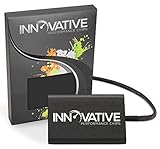All Categories








About Java AWT Reference
Product Description The Java AWT Reference provides complete reference documentation on the Abstract Window Toolkit (AWT), a large collection of classes for building graphical user interfaces in Java. With AWT, you can create windows, draw, work with images, and use components like buttons, scrollbars, and pulldown menus. The Java AWT Reference covers the classes that comprise the java.awt, java.awt.image, java.applet,java.awt.event, and java.awt.datatransfer packages. These classes provide the functionality that allows a Java application to provide user interaction in a graphical environment.This book takes you beyond what you'd expect from a standard reference manual. Classes and methods are, of course, described in detail. But the book does much more. It offers a comprehensive explanation of how AWT components fit together. In working with components, for example, you'll see how events fit into the overall picture, what they mean, and how to use them. The book includes lots of sample code, so that you can learn by example. In addition to descriptions of the standard layout managers, for instance, you'll find an extended code example for writing your own layout manager.The Java AWT Reference is part of O'Reilly's Java documentation series. This edition describes both Version 1.0.2 and Version 1.1 of the Java Development Kit and includes: Easy-to-use reference material on every AWT class Extended examples that demonstrate important AWT functionality A detailed explanation of Java's image processing mechanisms Coverage of every AWT component and container, showing how to use them in various combinations to create effective interfaces Descriptions of all the layout managers, including GridBagLayout The Java AWT Reference is meant to be used in conjunction with the Java Fundamental Classes Reference. Together, these two reference manuals cover all of the classes in the the Java Core API. The Java Language Reference completes the package, providing a complete reference on the Java programming language. These manuals comprise the definitive set of Java documentation that you need to do serious programming with Java.O'Reilly & Associates also publishes an introductory text, Exploring Java, if you need to get up to speed with this exciting new technology. For advanced Java programming topics, look for upcoming books from O'Reilly on network programming, distributed computing, and database programming. And as new Java APIs become available, O'Reilly is committed to expanding the Java series to cover those as well. Amazon.com Review Java AWT Reference provides a solid introduction to programming with the Abstract Window Toolkit (AWT) in Java. AWT programming is something of an endangered species with JavaBeans and new interface class libraries just over the horizon. However, until these new technologies arrive, the AWT is still the bread and butter for today's Java user interfaces. The author carefully introduces all the basics here, starting with graphics programming and continuing with new JDK 1.1 features, such as the new event model, and information on working with individual AWT components like labels, buttons, and text controls. Along the way, the author highlights features that are new to JDK 1.1 (for instance, clipboard and printing capabilities, which are described in separate chapters). Although the book is primarily a reference for the AWT (a look-up section contains over 450 pages of the AWT class APIs), it also includes some short, clear programming examples on how to use the main features of AWT. Clearly written, this book is a good candidate for the library of any Java developer who needs to learn the nuts and bolts of AWT programming, including JDK 1.1-specific features. From the Publisher The Java AWT Reference provides complete reference documentation on the Abstract Windowing Toolkit (AWT), a large collection of classes for building graphical user interfaces in Java. With AWT, you can create windows, d






















